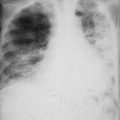and Karl Reinhard Aigner3
(1)
Department of Surgery, The University of Sydney, Mosman, NSW, Australia
(2)
The Royal Prince Alfred and Sydney Hospitals, Mosman, NSW, Australia
(3)
Department of Surgical Oncology, Medias Clinic Surgical Oncology, Burghausen, Germany
In this chapter you will learn about:
The most likely sites of metastatic spread from primary cancers
A metastatic (secondary) cancer is the term used to describe a cancer that is growing in an organ or tissue some distance away from the tissue or organ in which it originated. The most important differences between benign tumours and malignant tumours are that benign tumours tend to be slowly growing and remain localised to the tissue in which they arose. Malignant tumours tend to grow more rapidly, grow into surrounding structures and spread and establish secondary growths in tissues or organs away from their primary site of development. To spread to distant sites, malignant cells usually grow into blood vessels or lymph vessels. Individual cells or clumps of cells break off and are carried by the bloodstream or the lymphatic vessels to a distant organ or tissue or to lymph nodes where they may grow as secondary or metastatic tumours. It is somewhat akin to the spreading cancer cells acting like “seeds” and being transported along blood or lymph vessels to a new “soil” where they may take root and grow. Malignant cells may also sometimes spread along nerve sheaths or across body cavities such as the abdominal cavity or a pleural cavity.
The most common site for metastatic spread of carcinomas as opposed to sarcomas is via lymph vessels into lymph nodes. First, they grow in lymph nodes near the original cancer and then spread into lymph nodes further away (Fig. 22.1). The next most common sites of spread are by the bloodstream to the lungs or liver.


Fig. 22.1
This elderly woman had metastatic cancer in enlarged, hard cervical lymph nodes from a squamous cancer under the right side of her tongue. She had not been aware of any trouble in her mouth
Other common sites of metastatic spread are to bones, the brain, under the skin or to the ovaries. No tissue is exempt from developing a metastasis, including the adrenal glands and the kidneys. However, some organs and tissues tend to have a relatively low incidence of metastatic growth of most cancers for no obvious reason. These include the spleen and muscles.
Exercise
What primary sites are likely to have resulted in metastatic involvement of cervical (neck) lymph nodes?
. . . . . . . . . . . . . . . . . . . . . . . . . . . . . . . . . . . . . . . . . . . . . . . . . . . . . . . . . . . . . . . . . . . . . . . . . . . . . . . . . . . . . . . . . . . . . . . . . . . . . . . . . . . . . . . . . . . . . . . . . . . . . . . . . . . . . . . . . . . . . . . . . . . . . . . . . . . . . . . . . . . . . . . . . . . . . . . . . . . . . . . . . . . . . . . . . . . . . . . . . . . . . . . . . . . . . . . . . . . . . . . . . . . . . . . . . . . . . . . . . . . . . . . . . . . . . . . . . . . . . . . . . . . . . . . . . . . . . . . . . . . . . . . . . . . . . . . . . . . . . . . . . . . . . . . . . . . . . . . . . . . . . . . . . . . . . . . . . . . . . . . . . . . . . . . . . . . . . . . . . . . . . . . . . . . . . . . . . . . . . . . . . . . . . . . . . . . . . . . . . .
The likelihood of a tumour metastasising to a particular site depends to a considerable degree on the type of tumour and its place of origin.
The likelihood of a tumour metastasising to a particular site depends on a considerable degree on the type of tumour and its place of origin. Stomach, pancreas and bowel cancers, for example, tend to spread first to abdominal lymph nodes and by portal vein to the liver. Breast cancer tends to spread first to nearby lymph nodes and later to the lungs, liver and bone. Prostate cancer tends to spread to local lymph nodes and to bones. Skin cancer and cancers in the mouth and throat tend to spread to nearby lymph nodes with the exception of basal cell cancer which rarely spreads anywhere other than into surrounding tissues. Lung cancers, on the other hand, tend to spread early not only to lymph nodes but to almost any other organ or tissue in the body including the bone and brain. Like lung cancer, melanoma tends to spread not only to the lymph nodes, lung, liver, bowel and brain but also to the spleen.
Sarcomas are more likely to first spread via the bloodstream to the lungs rather than to lymph nodes. The most likely sites of cancer metastases are given in Table 22.1.
Table 22.1
Most likely sites of cancer metastases
Primary | Common sites for metastases | Chap. |
|---|---|---|
BCC of the skin | Very rarely metastasises | |
SCC of the skin | Regional lymph nodes; the next group of lymph nodes; lungs very late in disease spread | Stay updated, free articles. Join our Telegram channel
Full access? Get Clinical Tree
 Get Clinical Tree app for offline access
Get Clinical Tree app for offline access

|



